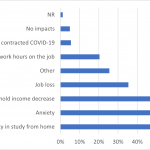Abstract
In the field of robotics education, introductory courses would ideally utilize heavy industrial arms for hands-on learning. This would provide students with valuable experience in joint programming, which involves direct control of each joint motor in the robotic arm to accomplish desired path planning and differential movements. This practice requires consideration of the physical properties of the large arm such as its large mass. However, the use of heavy industrial robotic arms has several drawbacks. They are large and expensive, require specialized maintenance, can pose safety risks, and they typically do not allow for direct control of the joint motors. The use of a small, lightweight, toy-like arm is not suitable since their lightweight construction means they do not exhibit behavior associated with heavier arms. Robotic arm simulators using a virtual arm doesn’t offer the same level of hands-on engagement and excitement as a physical arm.
